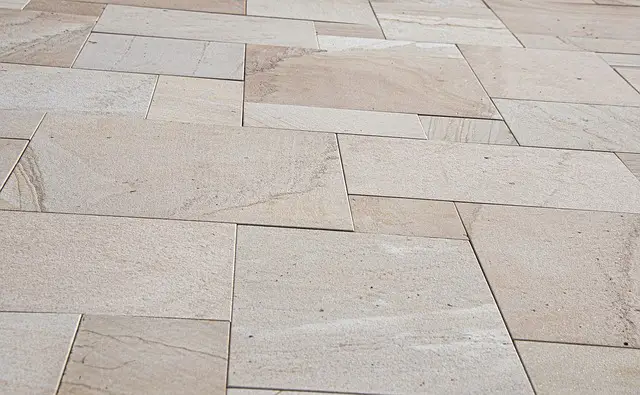Tile removal and demolition is a common job for DIY’ers, and professionals like bathroom and laundry re-modellers.
There are a few different types of tools and techniques you can use for this task depending on your preference, and the size (surface area) and type of tiles (thickness and density) you want to remove.
Some tools are better for smaller surface areas and precision, whilst other are for power and quickly clearing large areas and tough tiles.
5 Types Of Tools & Techniques For Tile Removal & Demolition
Prior to tile removal and demolition, make sure you place down drop sheets on nearby carpets, floorboards, or any surfaces you want to protect.
1. Chisel & Hammer
The slowest and most physically demanding of the tools and techniques for tile removal. However, it’s also the most controlled and precise.
Use a hand chisel and hammer for small surface area tile removal, and light duty tile removal.
Areas like this might include small surface areas of tile around splash backs and countertops.
Use a pointed or bull point chisel to break the tiles (you can even use a small hammer if the tiles are thin).
You can then use a tile chisel, or scraping chisel to lift the tiles up off the surface.
A heavy duty hand held floor scraper can be used to remove the tile adhesive.
2. Sledgehammer & Scraper (power or handheld)
For very small bathroom and laundry areas, you may choose to use a sledgehammer and scraper.
This will only work is the tiles are thin and small, and there is not a large surface area.
Break the tiles first by hitting them with a sledge hammer. You can then remove stubborn tiles or tiles close to the wall with a small hammer and chisel.
Use a scraper to remove the adhesive.
3. Power Rotary Hammer, Chipping Hammer, Or Air Hammer
Small power tools are good for removing small-medium surface areas of tiles quickly – splash backs, countertops, small wall areas, small floor areas.
The most common small power tool for tile removal is a rotary hammer.
To put it in perspective, a rotary hammer has around 2.5 ft-lbs impact energy, a demolition hammer around 10 ft-lbs, and jack hammers have anywhere between 30-60 ft-lbs.
Power rotary hammers are much lighter than the bigger power tools, which means better control for the smaller areas.
Attach a flat chisel or pointed bit to the rotary hammer to break the tiles, and a tile chisel to lift the tiles and remove them.
4. Demolition Hammer
Read more about demolition hammers in this guide.
Demolition hammers sit somewhere between a rotary hammer and jackhammer in terms of size and power.
Generally, only use them on larger surface areas like floors with a concrete base. Don’t use any surface without a concrete backing.
As a guide, you can get roughly about 200 square metres of tiles removed with a standard demolition hammer within about 3-4 hours.
Use a a bull point tile bit to break the tiles, and a tile chisel bit to get underneath and pop the tiles up.
The long bits on the demolition hammer (12 inch bits) make it especially good for removing larger tiles, such as 8 by 8 inch tiles.
Demolition hammers are light enough to be operated horizontally (usually with a handle on top and one on the side).
5. Jackhammer/Breaker
Jackhammers and demolition breakers are the largest and most powerful tool on this list.
They are operated standing up and with the tool standing up vertically.
Using a chisel or bull point bit, you can use a jackhammer to demolish/break to hardest tiles and larger surface areas quickly.
Read more about jackhammers and demolition breakers.
With any of the above techniques, you can use a multi tool/oscillating tool with scraper attachment to remove tile adhesive.
